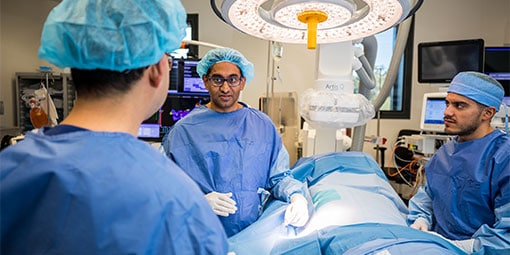Trans-oesophageal Echo
What is a Transoesophageal Echo?
Transoesophageal Echocardiography (TOE) is a procedure that enables the Doctor to obtain very clear ultrasound pictures of your heart from within your oesophagus and stomach.
It permits closer access to the heart and is ideal for looking at the heart valves, aorta and structures at the back of the heart. It is particularly useful for identifying preformed clots within the heart that may prevent invasive procedures of the heart.

What happens during the procedure?
When you arrive for your test you will be given a local anaesthetic spray or gargle, which will make your throat numb. A sedative may be given which will make you drowsy and may take away some memory of the test. You should not drive for 12 hours after the procedure. The back of your throat will be anaesthetised and your swallow reflex may be impaired. Before leaving, your ability to swallow will be tested by the Nursing Staff in the recovery area with a small sip of water. If you have no problems swallowing, you may then eat and drink as normal.
Risks
The risk of complications is very low and will be discussed with you by the Cardiologist performing the procedure. Based on a reported series of over 10,000 cases these include:
- Breathing complications; inhalation of stomach contents – less than 1 in 1,000.
- Damage or perforation of the oesophagus – less than 1 in 1,000.
- Death – frequency less than 1 in 10,000.
- A sore throat and minor bleeding may occur in the following day or so.
